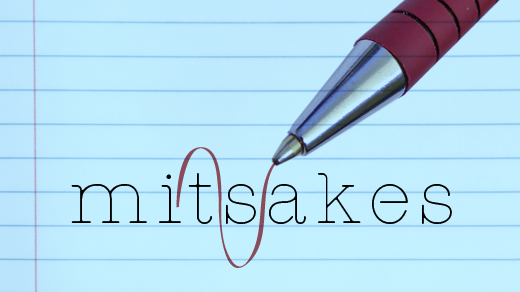People who let open principles guide their leadership practices in open organizations inevitably find themselves fielding feedback. Lots of feedback.
That's by design. Open leaders invite comment and critique on just about anything they can.
But it also poses a regular challenge: How to sift through, manage, evaluate, and address that feedback in authentic and useful ways?
Members of the Open Organization project got a taste of this process recently. Working on the Open Leadership Definition—a robust, collaborative description of the specific mindsets and behaviors associated with open styles of leadership—collaborators solicited community-wide feedback on a multi-hundred-word draft document. The results were impressive—even if a bit intimidating.
As we continue diligently working through the feedback we received, we thought we'd offer some insight into our own process for managing a significant amount of feedback—in case it's useful to others trying to do the same.
The challenge
First, we invited anyone to read and comment directly on our draft documents. Results were humbling. We're so pleased to have received so many thoughtful comments and ideas for improvement. But we received a lot of comments.
We needed some way to organize, analyze, review, address, and respond to all those comments. After all, in open organizations, feedback is only valuable and effective to the extent that people respond to and act on it.
So we turned to a well-known technological advancement that has changed the lives of many: the spreadsheet. We collected all the comments we received in a single place—and made sure everyone could see what we were doing along the way.
The result: a collaborative and transparent worksheet anyone can follow as they watch us edit and revise in line with the community's stellar feedback.
The process
But collecting feedback is only part of the work (and the easiest part, at that). Next, we knew we needed to create (and publish) a step-by-step process anyone could follow when collaborating on edits to the Open Leadership Definition.
Here's what we can up with:
- Review feedback left in section documents.
- Record/transcribe feedback, comments, and suggestions into our spreadsheet.
- Assign editorial leads for each document section.
- (Editorial leads) Systematically review comments in biweekly community calls with other contributors.
- (Editorial leads) Address reviewer comments, make necessary editorial changes to documents.
- (Editorial leads) Record their decisions, changes, and/or correspondence in the spreadsheet.
Without a doubt, it's more work than simply jumping into the document and making the changes we thought were most appropriate. Because all our work—all the feedback we received, and all the ways we were responding to that feedback—was open and transparent, we'll need to reflect on and justify every editorial decision we made. It takes time. But it's the least we can do to reciprocate the kindness our community showed us in leaving their feedback (after all, that took time, too!).
The results (so far)
As we've worked, we've categorized feedback into seven different "types." Some, like typos and grammar issues, are no-brainers; we'll integrate this feedback and clean up our mistakes. Others, like those that suggest additional ideas or ask us to rethink assumptions, might also be no-brainers—but not all of them can be integrated so easily. So, we're using our biweekly calls to work through and discuss this feedback.
That's the most fun part—the part where we get to connect for live chatter and debate about how we are—or aren't—going to address what the community has raised.
Here's a summary of what we've seen and debated so far.
Working on the preamble
The first section we reviewed was the document's "preamble," which received a lot of insightful and important comments that underscored the importance of nuance. This piece of the definition summarizes the rest, and so we need to get it right. Here's what we discussed.
The types of organizations where open leaders thrive. We've discussed the ways open leaders can enhance organizations operating with all kinds of cultures—but argued that they're especially important in open organizations (because of the way command-and-control thinking can stymie openness). We acknowledge that all kinds of organizations can be open organizations—not just those wrestling with ambiguity or focusing on innovation.
Organizations as actors. One interesting debate centered on writing that seemed to treat organizations themselves as individual actors—rather than, say, groups of individual actors. Some of us argued that organizations are more than the sum of their components and that sentences like "open leaders make organizations more self-aware" made perfect sense. Others countered that this made organizations seem like sentient beings, when in fact they're collections of sentient beings. We were personifying organizations, in other words. Ultimately, we were able to find a way to both defend the sentiment that an organization can be reflective (concerned with its own context, boundaries, and limitations) and yet do so in a way that doesn't completely anthropomorphize the organization. The line is blurry at best. So we discussed how open leaders support a culture of self awareness and edited our language in the preamble to try and better balance this philosophical point.
Mindsets and behaviors. Here again we arrived at the question that motivated this project in the first place: What is open leadership? We debated the status of "open leadership" as a "mindset" versus a "skill" versus a "practice" (each of these designations has implications for how we define open leadership and how we help others adopt it), and doing this meant negotiating the complexities of character, ego, mindfulness, and more. For instance, a skill can generally be taught, but there's more nuance to what we all believe can be "taught" versus "experienced." And as our document shows, open leadership isn't just a set of things people do; it's a way of thinking, too. So we settled on open leadership as being a specific set of "mindsets and behaviors," an organic decision inspired by Red Hat's definition of the "open leadership" concept.
Open leaders and character. Other excellent reviewer comments led us to discuss distributed leadership, planned obsolescence as a positive attribute and how "authority" to lead only lasts as long as people grant that authority. We discussed a nebulous quality open leaders have, character traits and experience that people value and therefore are willing to go to when support is needed. Some of our revisions will certainly reflect this discussion.
Slow and steady wins the race
We've only just begun processing feedback on the Open Leadership Definition draft. We'll continue revisiting (and discussing!) in our biweekly calls, and we're planning new pieces about this work. We're eager to learn from our community and hear how this work can be more useful, so while the current draft is closed to comments, we always invite feedback. Why not follow along? And keep an eye out for future opportunities to get involved.









2 Comments